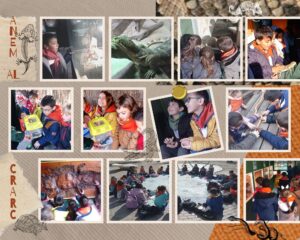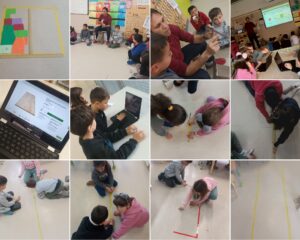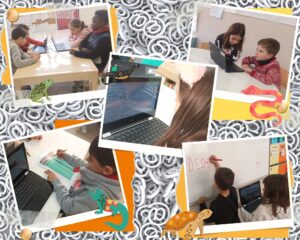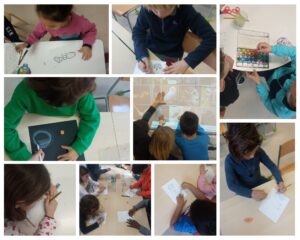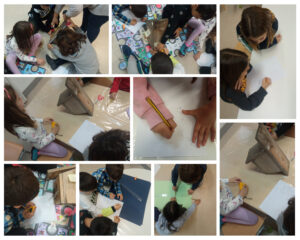Divendres les Alícies vam anar fins a Masquefa per conèixer la tasca d’un centre de recuperació d’animals, un dels experts que en el nostre mapa d’idees tenim. A Masquefa, en concret, s’encarreguen de cuidar i curar amfibis i rèpitils, i sempre que poden, a més a més, els intenten reintroduir al seu hàbitat perquè visquin en llibertat.
La Paqui ha estat la persona que ens ha ensenyat tot el recinte, ens ha explicat les diferents tasques que realitzen i ens ha ajudat a apropar-nos a rèptils i amfibis coneixent la història de molts d’ells i elles. “Els animals no són cap joguina” ens ha dit la Paqui en moments diferents, i hem recordat les nostres converses a l’aula amb les que arribàvem a aquesta mateixa afirmació. Famílies que viatgen a l’estranger i amaguen rèptils a la maleta, persones que compren animals exòtics i que després no poden seguir cuidant, animals abandonats, animals que s’escapen… tots aquests animals són trobats i portats al centre on de seguida els ubiquen en un espai acondicionat segons les característiques de l’animal.
De tant en tant, entre explicació i explicació, i històries diverses, la Paqui ens ha mostrat de ben a prop alguns dels habitants del centre. Per poder tocar-los hem hagut d’estar tranquils, amb calma, per tal que ells i elles també ho estiguessin. Hem pogut tocar un mascle de pogona (o dragó barbut), un bebè de tortuga mediterrània (haurà de créixer una mica per saber si és mascle o femella), un mascle de tortuga mediterrània amb una pròtesi de fibra de vidre a la closca (algun mamífer, segurament un gos, hauria rosegat la seva closca pensant que era un ós) i una serp que no deixava de treure la llengua (ens estava olorant!)! També hem pogut veure molt i molt de prop una salamandra, no l’hem pogut tocar per tal de cuidar-la, la seva pell nua és delicada i necessita estar sempre humida.
Després de la visita al CRARC hem anat caminant fins a un parc de la vora per dinar plegats. Amb la panxa plena i noves experiències viscudes, hem jugat una bona estona a jocs diversos!
